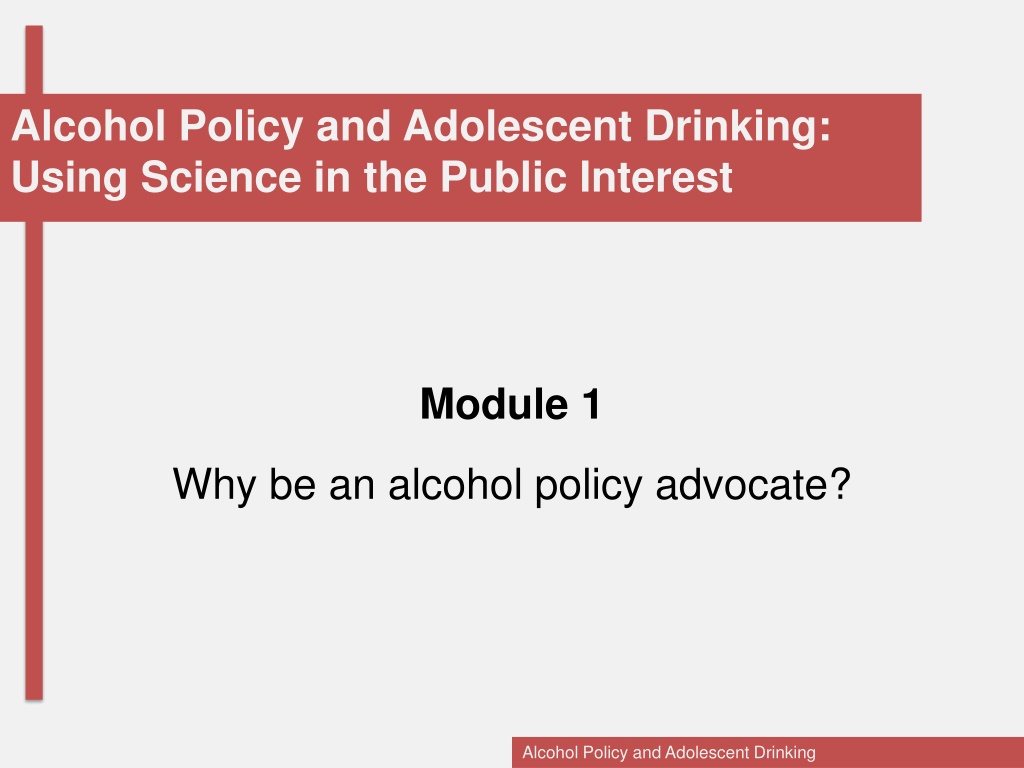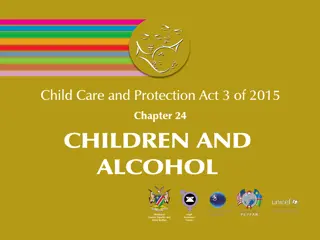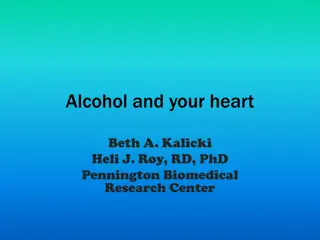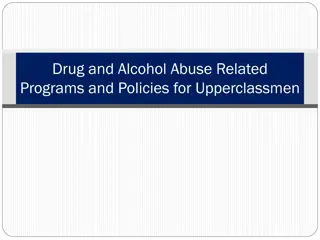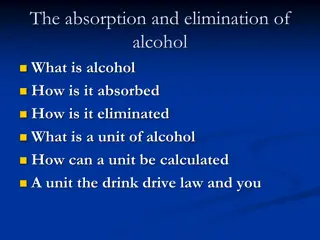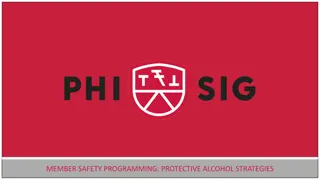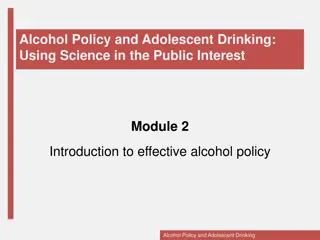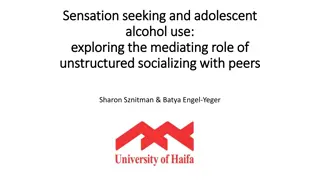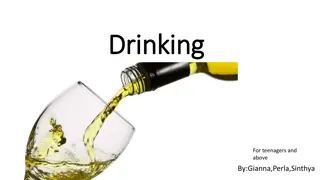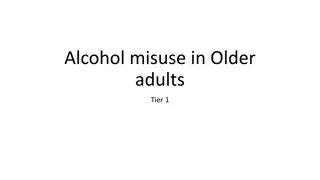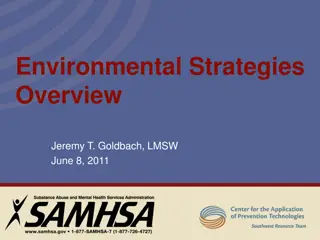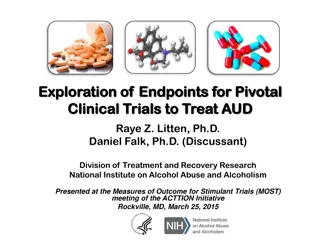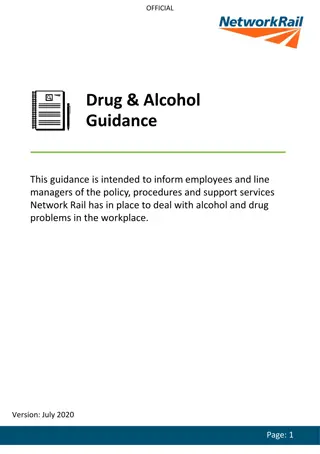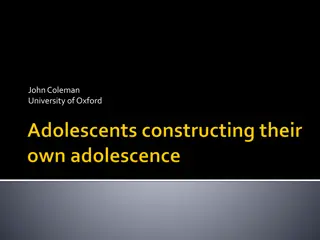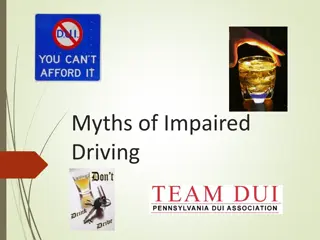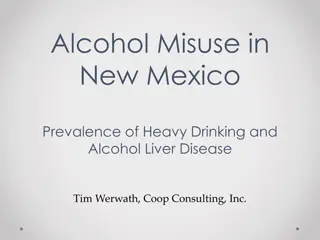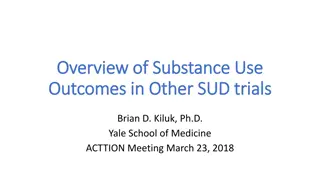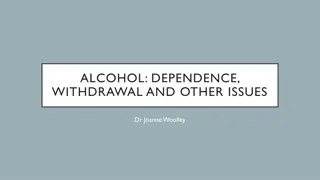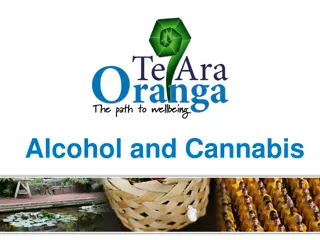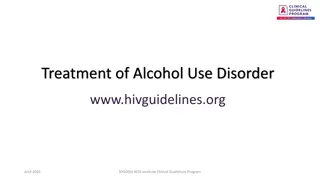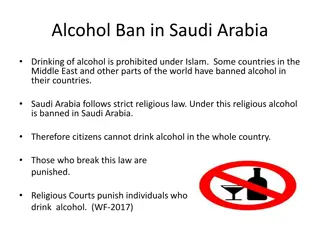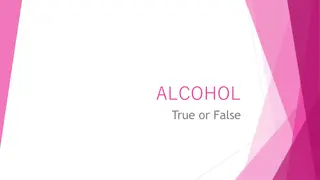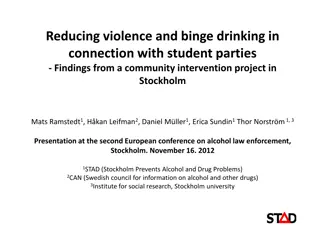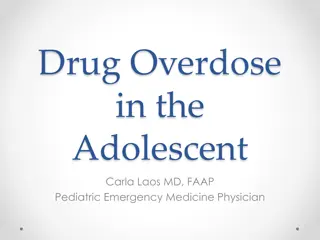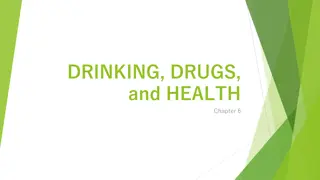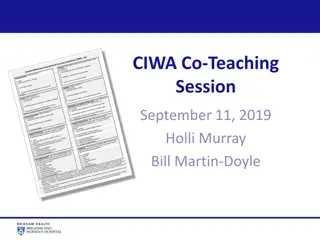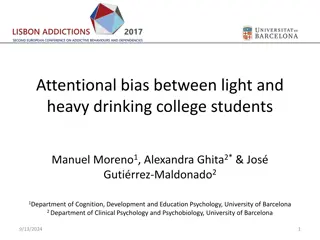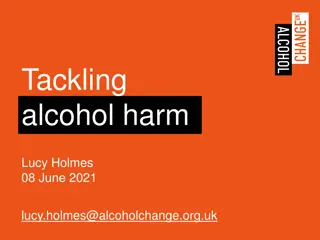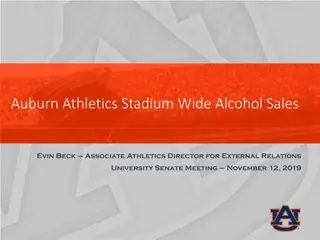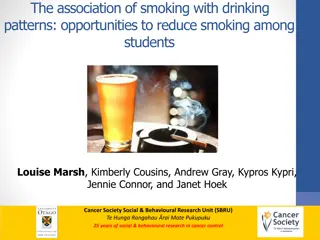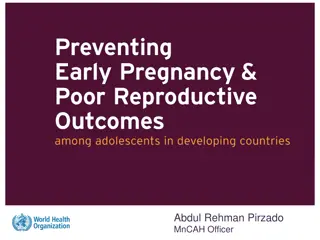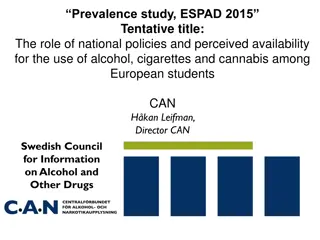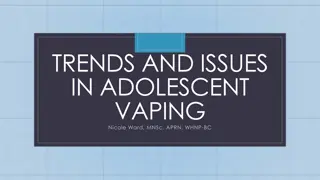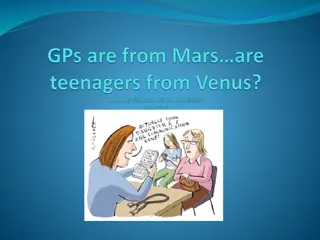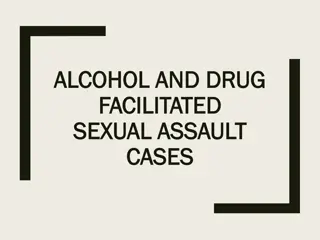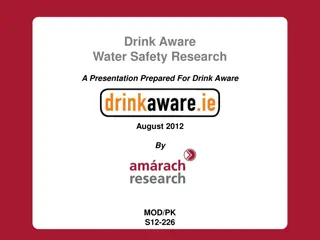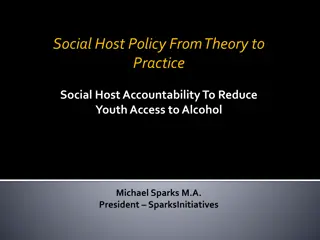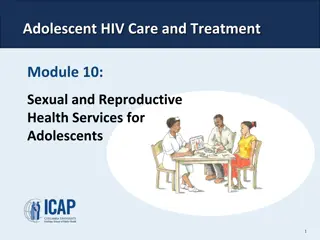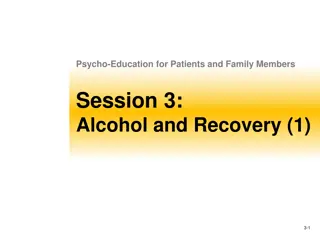Understanding the Impact of Alcohol Policy on Adolescent Drinking
Alcohol policy advocacy is crucial due to the harmful effects of alcohol on individual health, society, and economic development. Dr. Evelyn Gillan's work highlights the importance of addressing alcohol-related issues, particularly among adolescents. Alcohol misuse contributes to various health problems and social harms globally, making it imperative to focus on intervention areas like pricing controls, advertising regulation, and education.
Download Presentation

Please find below an Image/Link to download the presentation.
The content on the website is provided AS IS for your information and personal use only. It may not be sold, licensed, or shared on other websites without obtaining consent from the author. Download presentation by click this link. If you encounter any issues during the download, it is possible that the publisher has removed the file from their server.
E N D
Presentation Transcript
Alcohol Policy and Adolescent Drinking: Using Science in the Public Interest Module 1 Why be an alcohol policy advocate? Alcohol Policy and Adolescent Drinking
Remembering Dr Evelyn Gillan Chief Executive of Alcohol Focus Scotland and co-founder of the Zero Tolerance Campaign 1959 2015 Alcohol Policy and Adolescent Drinking
Alcohol the problem Alcohol Policy and Adolescent Drinking 3
Alcohol the problem Globally 5th leading cause of ill health & premature death Harm to individual health includes increased risk of cancer (liver, breast, mouth, larynx ), ischemic heart disease, liver cirrhosis, poisoning, mental health Harm to society includes: violent crime, social disorder, domestic abuse, rape, suicide, accidents, homicides, RTAs Harm throughout the life course: exposure during pregnancy can impair brain development of fetus, adolescent exposure increases risk of dependence in later life Major determinant of health inequalities and inhibitor of economic development Places huge strain on public services and economy Alcohol Policy and Adolescent Drinking 4
Why has alcohol become such a problem? Changing nature of alcohol industry alcohol is a global commodity Mass marketing and global brands Emerging markets targeted Affordability Availability Change in social perceptions Alcohol Policy and Adolescent Drinking 5
Alcohol: No ordinary commodity Alcohol Policy and Adolescent Drinking 6
Seven policy areas for intervention 1. 2. Alcohol taxes and other price controls Regulate physical availability through restrictions on time, place, and density of alcohol outlets Regulate alcohol advertising and other marketing Alter the drinking context Drink-driving countermeasures Conduct screening and brief intervention in health care settings; increase availability of treatment programmes Education and persuasion: provide information to adults and young people especially through mass media, workplace and school- based alcohol education programmes * WHO best buys , endorsed by OECD 3. 4. 5. 6. 7. Alcohol Policy and Adolescent Drinking 7
There is no silver bullet A comprehensive framework of policies is needed to effectively tackle alcohol harm Alcohol Policy and Adolescent Drinking
Effective alcohol policy must Have a strong evidence base Cover a range of policy areas Be supported by and understood by the public Be culturally sensitive Target the population as a whole and support at-risk individuals Be based on public health interests Be free from vested commercial interests Alcohol Policy and Adolescent Drinking 9
Barriers to effective alcohol policies Alcohol Policy and Adolescent Drinking 10
Barriers to effective alcohol policies Evidence based policy versus political expediency Increased taxes and restrictions on alcohol politically unpopular Population level approaches seen as state interference Political priorities and other distractions Economic arguments and influence of drinks industry Alcohol Policy and Adolescent Drinking 11
Policy windows of opportunity Policy change occurs when three streams of activity collide: 1. Problem Stream (evidence of need for action) 2. Policy Stream (evidence of effective solution) 3. Political Stream (political will to act) Policy entrepreneurs can work to bring these streams together to create windows of opportunity for policy change Policy entrepreneurs can come from a range of backgrounds, including public interest NGOs & industry bodies Alcohol Policy and Adolescent Drinking 12
Three Policy Streams Alcohol Policy and Adolescent Drinking 13
Alcohol industry activities Estimated US $1 trillion global industry Fund Social Aspect PR Organizations Promote drink responsibly messages - puts focus and responsibility for harm on the drinker, not the product Promote ineffective measures and oppose effective measures e.g. voluntary codes on advertising ( self regulation ) Active engagement in alcohol policy arena - lobbying, political donations, policy development (especially in emerging markets) Engagement in research - publishing, funding, sponsoring conferences, discredit research into effective policies Alcohol Policy and Adolescent Drinking 14
Role of alcohol policy advocates The alcohol control movement works to reduce the devastating impact of alcohol harm on individuals, families and communities around the world The movement needs advocates who can engage with politicians, opinion formers and the general public to raise their awareness of the importance of protecting people especially children and young people from exposure to alcohol harms Alcohol Policy and Adolescent Drinking 15
What do we want the objectives of alcohol control advocacy Fewer lives cut short as a result of alcohol Fewer people suffering ill health and disability due to alcohol Fewer people negatively affected by other people s drinking We want children and young people to grow up in a society which protects them from exposure to alcohol harms Alcohol Policy and Adolescent Drinking 16
Strategic advocacy goals Evidence-informed, population approaches to alcohol policy and in particular, controls on price and availability. A clear distinction to be made in the public policy process between organizations representing the public interest and those representing commercial vested interests. Measures which protect children and young people from exposure to alcohol harms, including increased regulation of alcohol marketing and restrictions on alcohol sponsorship of sports events and events with youth appeal. Alcohol Policy and Adolescent Drinking 17
A successful advocacy strategy will seek to influence both decision-makers, opinion leaders and grassroots groups. Decision-makers = the people who make the decisions about what kind of alcohol policies will be implemented at local, national or international level. Opinion leaders = the people who influence the decision- makers. Grassroots = Everyday citizens/residents who when joined into groups and coalitions can influence decision makers and opinion leaders Alcohol Policy and Adolescent Drinking
Summary: Why be an alcohol policy advocate? Alcohol has enormous health and social costs, particularly for young people Policies are available that can reduce these costs, but they are not used consistently due to barriers Advocacy in the policy arena can make a difference between good policy and bad policy Alcohol Policy and Adolescent Drinking 19
